Publications

April 7, 2010
More than 1,000 adolescents and young adults in New Hampshire are homeless, and their numbers are growing. The brief, co-published with the Children's Alliance of New Hampshire, provides an estimate of homeless youth in New Hampshire calculated from national and state data and describes the needs of homeless youth based on interviews and a survey of providers of homeless services in the…

April 1, 2010
As Coös County youth age, their attachment to their communities may deteriorate. This brief presents new data from the Coös Youth Study. This research indicates efforts to keep young people in Coös may benefit from efforts to show students that their views matter to adults in their communities.
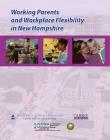
April 1, 2010
This report, a joint effort between the Carsey Institute, UNH Cooperative Extension, and New Hampshire Employment Security, looks at working parents and their job flexibility and the importance it has for families trying to achieve a work-life balance.
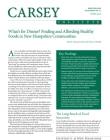
April 1, 2010
Access to healthy food is becoming increasingly difficult for some households in the Granite State, as grocery stores relocate or consolidate, leaving some residents to depend on convenience stores for basic groceries. This brief looks at recent data on food deserts in New Hampshire.
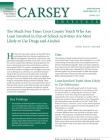
April 1, 2010
Carsey Institute researchers are seeing links between the self-reported substance use and involvement in out-of-school activities. As part of a ten-year tracking survey of high school students in Coos County, New Hampshire, this brief finds that those most involved with constructive activities report the least amount of substance abuse.

April 1, 2010
Based on a Community and Environment in Rural America survey, this brief looks at four counties in Alabama. It finds blacks and whites have different outcomes in the community, despite expectations of regional stability and greater equality. Though they reported similar rates of social mobility, African Americans in the "Black Belt" of Alabama are disproportionately poorer and employed…
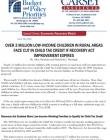
April 1, 2010
According to this new research, at the end of 2010, the Child Tax Credit improvements that were included in the 2009 American Recovery and Reinvestment Act will expire if Congress does not extend them. If this happens, low-income working families across America will be affected.

April 1, 2010
This fact sheet examines out-of-home placement rates for children removed from their homes because of abuse or neglect. The data finds that children in remote rural areas have overall higher rates of out-of-home placements. It also provides data on placement rates by rural or urban status to help inform policy makers as they discuss the child welfare system.

April 1, 2010
According to a new study, New Hampshire youth, ages 13 to 24, are more likely to complete school, be employed, and have lower obesity rates than their peers nationwide but fare worse in national measures of alcohol and substance abuse. This brief, a co-publication with the Children's Alliance of New Hampshire, provides an overview of youth well-being in New Hampshire calculated from national…

April 1, 2010
A new brief from Nordblom Fellow Meghan Mills at the Carsey Institute finds that youth in New Hampshire's North Country have challenges in accessing support for substance abuse and mental health issues. Mills also finds that the providers face unique challenges, from getting referrals to hiring professionals, all while working without a functional network.
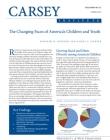
April 1, 2010
The U.S. Census Bureau estimates indicate that between July 2008 and July 2009, 48.6 percent of the 4 million children born in the United States were minorities. In contrast, nearly 60 percent of the children born ten years ago were non-Hispanic white. This rapid change demonstrates that America's youth are at the forefront of the country's rapidly shifting demographic makeup. This…

April 1, 2010
When the school year ends, many low-income children rely on the USDA's Summer Food Service Program (SFSP) to supplement their diet. But less than one-third of SFSP sites are located in rural communities and rural children participate at a lower rate than those in more urban areas.

March 29, 2010
Between July 2008 and July 2009, more people left New Hampshire than moved to it, reversing a trend of domestic migration that had fueled the state's population growth over the past decade, according to U.S. Census Bureau data in released March 2010. This fact sheet summarizes the data.

February 24, 2010
This issue brief describes how the census is conducted in rural areas, identifies some of the most difficult rural areas to count, and highlights what organizations are doing to ensure a more accurate census count in rural America. It also points out that undercounting by the census can lead to communities not receiving a fair share of federal funding.
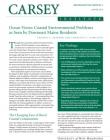
January 25, 2010
This brief contends that loss of fishing jobs and income is the top environment-related concern among residents of Maine's Hancock and Washington counties, as well as forestry decline and water pollution. Also of note, across a wide range of environmental issues, political party affiliation is associated with level of concern about environmental problems.
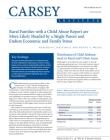
January 1, 2010
This brief, which is based on data from the National Survey of Child and Adolescent Well-Being, finds that rural families who have been reported to Child Protective Services are more likely than urban families to have financial difficulties and high family stress, as well as grow up in single-parent households. To effectively address these issues, the brief urges policy makers to look at the lack…
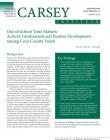
January 1, 2010
This brief looks at the connections between how youth spend their free time and positive or negative attitudes about themselves and their future plans. Family studies assistant professor and Carsey faculty fellow Erin Hiley Sharp used data from the Carsey Institute's Coos County Youth Survey to show differences by activity level and students' expectations for positive outcomes in their…
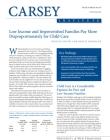
January 1, 2010
According to research based on the 2004 Survey of Income and Program Participation, working families with young children living in poverty pay 32 percent of their income on child care, nearly five times more than families living at more than 200 percent of the poverty level. This brief asks policy makers to consider allowing more subsidies to be available to those who could benefit most from them…

January 1, 2010
This brief, based on data from the U.S. Census Bureau, examines how rural families use four of the major federal child nutrition programs. It finds that 29 percent of rural families with children participate but that there are barriers to these nutrition programs, such as the lack of public transportation and high operating costs for rural schools and child care programs.
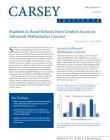
December 16, 2009
This Carsey brief reveals that students in rural areas and small towns have less access to higher-level mathematics courses than students in urban settings, which results in serious educational consequences, including lower scores on assessment tests and fewer qualified students entering science, technology, engineering, and mathematics (STEM) job pipelines.